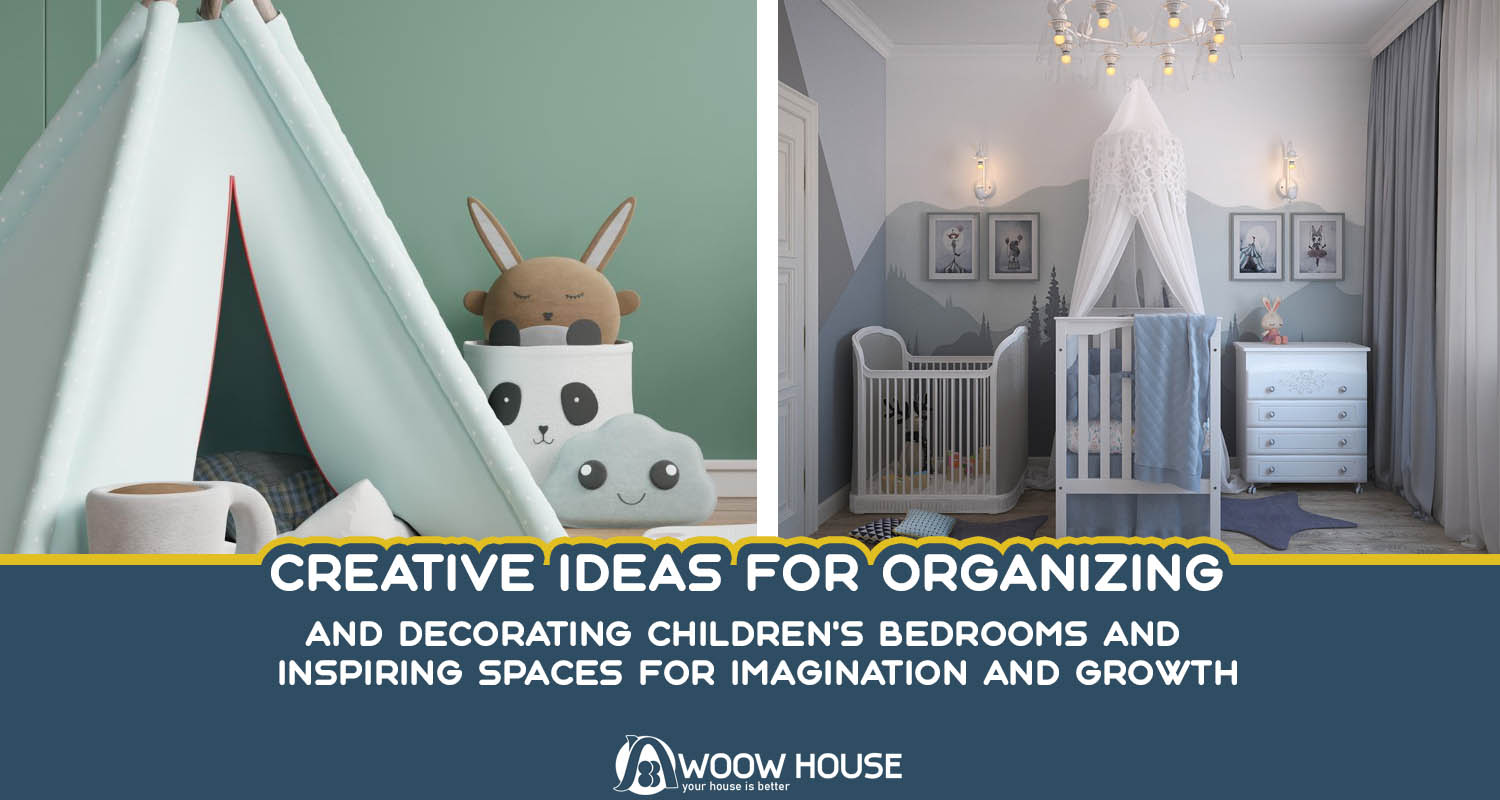Children’s bedrooms are more than just places to sleep; they are havens for imagination, creativity, and self-expression. Organizing and decorating a child’s bedroom involves more than just choosing furniture and paint colors—it’s about creating a space that nurtures their interests, encourages exploration, and promotes a sense of ownership and belonging. In this essay, we’ll explore creative ideas for organizing and decorating children’s bedrooms that inspire creativity, foster independence, and provide a sense of comfort and security.
Incorporate Functional Storage Solutions
One of the keys to an organized and clutter-free children’s bedroom is ample storage space for toys, books, clothes, and other belongings. Incorporating functional storage solutions not only helps keep the room tidy but also encourages children to take responsibility for their belongings and develop organizational skills.
Built-in Shelving
Install built-in shelves or bookcases to provide storage for books, toys, and decorative items. Adjustable shelves allow for flexibility and customization as your child’s storage needs change over time.
Under-Bed Storage
Maximize space by using under-bed storage solutions such as rolling bins, drawers, or storage boxes. These can be used to store seasonal clothing, extra bedding, or toys that are not frequently used.
Wall Organizers
Hang wall-mounted organizers such as pegboards, wire baskets, or fabric pouches to keep smaller items like art supplies, hair accessories, and school supplies within easy reach. Label each organizer to help children identify and access items independently.
Multi-functional Furniture
Choose multi-functional furniture pieces such as storage beds, bunk beds with built-in desks or play areas, or ottomans with hidden storage compartments. These pieces help maximize space and provide additional storage without sacrificing style or functionality.
Create a Theme or Color Scheme
Decorating children’s bedrooms with a cohesive theme or color scheme can help create a cohesive and visually appealing space that reflects your child’s interests and personality. Whether it’s a favorite color, hobby, or storybook character, incorporating a theme or color scheme into the room’s decor can inspire creativity and ignite imagination.
Choose a Theme
Select a theme that resonates with your child’s interests and passions, whether it’s outer space, dinosaurs, princesses, sports, or animals. Use themed bedding, wall decals, posters, and accessories to bring the theme to life and create a cohesive look.
Select a Color Scheme
Choose a color scheme that complements the theme and creates a harmonious and inviting atmosphere. Consider using a combination of bold and bright colors for accents and accessories, balanced with neutral tones for walls, furniture, and bedding.
Personalize with DIY Projects
Get creative and personalize the room with DIY projects such as handmade artwork, custom wall murals, or personalized name signs. Encourage your child to participate in the decorating process by allowing them to choose colors, fabrics, and decor items that reflect their personality and style.
Designate Zones for Play, Study, and Sleep
Children’s bedrooms serve multiple functions, from sleeping and studying to playing and relaxing. Designating separate zones within the room for different activities helps create a functional and organized space that supports your child’s daily routines and activities.
Sleep Zone
The sleep zone should be the focal point of the room, with a comfortable bed and bedding that promotes restful sleep. Choose a mattress and pillows that provide adequate support and comfort, and add blackout curtains or shades to create a dark and conducive sleep environment.
Play Zone
Create a designated play area with storage bins or baskets for toys, a soft rug or play mat for comfort, and low shelves or bins for easy access to toys and games. Incorporate play tents, teepees, or playhouses to create cozy and imaginative play spaces within the room.
Study Zone
Dedicate a corner or wall space for studying and homework, with a sturdy desk or table, ergonomic chair, and adequate lighting. Organize school supplies, books, and reference materials within easy reach, and add inspirational artwork or motivational quotes to inspire learning and creativity.
Foster Creativity and Self-Expression
Children’s bedrooms should be spaces where creativity and self-expression are celebrated and encouraged. Incorporating elements that spark imagination, promote exploration, and inspire creativity can help nurture your child’s interests and talents.
Art Display Area
Create a dedicated art display area with a gallery wall, corkboard, or wire grid where your child can showcase their artwork, school projects, and achievements. Rotate artwork regularly to keep the display fresh and encourage continued creativity.
Creative Workstation
Set up a creative workstation with a drawing table, easel, or craft cart stocked with art supplies, coloring books, and craft materials. Encourage your child to explore different artistic mediums and techniques and express themselves through creative projects.
Reading Nook
Designate a cozy reading nook with a comfortable chair or bean bag, soft pillows, and a selection of age-appropriate books and magazines. Create a quiet and inviting space where your child can relax, unwind, and escape into the magical world of books and stories.
Inspirational Decor
Surround your child with inspirational decor such as motivational quotes, affirmations, and posters that encourage positive thinking, self-confidence, and personal growth. Use removable wall decals or vinyl stickers to add inspirational messages or playful designs to walls, furniture, or doors.
Encourage Independence and Organization
Teaching children the importance of organization and responsibility from a young age sets the foundation for lifelong habits of cleanliness and orderliness. Encourage independence and organization by involving your child in the organization and maintenance of their bedroom.
Child-friendly Organization
Choose storage solutions that are accessible and easy for children to use independently, such as open bins, baskets, or cubbies. Label each storage container with pictures or words to help children identify and sort items correctly.
Daily Routine Chart
Create a visual daily routine chart or checklist that outlines tasks and responsibilities for your child, such as making the bed, tidying up toys, and putting away clothes. Encourage your child to check off tasks as they complete them and offer praise and rewards for a job well done.




